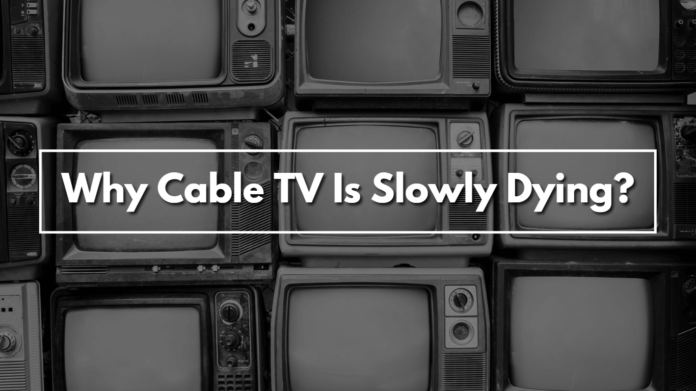It’s hard to imagine that an innovation so revolutionary a few decades ago, might be on its last legs. Cable television provided consumers with a plethora of channels to choose from and indulge in.
Which at the time attracted many consumers, but now it might be one of the reasons it’s driving many existing and potential customers away.
Too many channels and yet not enough
With some DSTV packages providing 100+ channels, viewers should be entertained for days, however many argue that that is far from the case. Allow me to elaborate. Despite DSTV’s extensive channel lineup, few watch them all.
By offering only a few channels of your favourite content in cheaper packages, the company indirectly forces you to upgrade to a more expensive plan.
No matter whether you will never watch the dozen children’s channels or do not wish to stay updated on the latest news.
In accessing the content you enjoy, you will receive an excess of channels you might never watch.
The number of entertainment channels in each package is by far the most, ranging above 60 in the premium plan. However, most of the series and movies are reruns, meaning the variety of content is limited.
If cable television would give the general public the choice of deciding the content and channels they want to add to their package, we might not even have this discussion, but then again it is not their only downfall.
Cost
Few things in this world are inexpensive or free of cost and even fewer can be considered worthwhile. However, that does not mean something of value should cost you an arm and a leg.
DStv Premium decoder subscriptions are currently priced at R799 per month, while streaming-only subscriptions cost R699 monthly.
There can, however, only be one user streaming at a time on a device. Aside from that, you’ll be streaming content from your DSTV package. While streaming subscriptions like Netflix for example, allow multiple users to watch on different devices simultaneously.
In addition, the South African Netflix library offers over 5000 titles. Netflix’s most expensive package, R199, costs less than a quarter of DSTV’s most expensive package, R799.
As both streaming services and DSTV streaming require an internet connection to watch content, it is not rocket science to conclude that the latter is more costly and the public has caught on.
A victim of technologically savvy generations
Millennials are the first true computer generation. Despite having grown up without computers, cell phones, and the internet, they learned how to utilize technology in their teenage years.
Thus, when it was time for them to leave the nest, they could determine if cable television would be of value to them.
As many millennials migrated to streaming services and found entertainment away from cable TV, they began to question the rates and studies show. According to Insider Intelligence, only 16% of millennials in the US watch cable television and the percentage of gen Z is even less.
As the first generation raised with the internet and computers, Gen Z has a profound understanding of technology and it’s not difficult to understand why.
Beyond studies indicating that Gen Z is tech-dependent, those who aren’t scrolling on their phones all day must adapt to increasingly digitalized methods in the corporate world.
As Gen Z never needed cable TV and managed to find entertainment on various platforms, there is thus no reason for them to purchase it.
Furthermore, most Gen Zers have the technical expertise to find content on other platforms that were once exclusively available on cable TV for much less or even free. Many platforms provide enough entertainment that newer generations don’t see the appeal of cable television.
Despite the popular belief that baby boomers are still clinging to cable, only 38% of their time is spent watching cable content. The number is still higher than any other generation, however, still, 40% of boomers prefer streaming to cable.
Ads
The average person has no time for ads these days. Cable television is notorious for the number of advertisements shown in an hour-long show – 17 minutes of ads.
Compare that number with pretty much any other platform. Even then, the ad run time of cable wins by a mile, since most other platforms offer short or skip-able ads.
With cable TV, however, you can’t skip the ads. The only way around it is to record the content since advertisements can be fast-forwarded.
Getting advertising is something that many people detest and would much rather buy their way out of.
The waiting game
My next point is in line with the aforementioned, which is that time is money, and people do not like to waste it. One massive advantage streaming services has over cable television is that you don’t have to wait for a specific time or date to watch your favourite show.
With cable, however, you will have to wait a while before you can pop some popcorn and enjoy the sarcastic wit of Sheldon Cooper.
Even if you were lucky enough and remembered to record the episode beforehand, Eskom is not on your side. Consumers can watch DSTV on their mobile phones, provided they have downloaded the app.
However, if your decoder is not connected to a power source and is in standby or on mode, it will not record.
As load-shedding occurs more often and for a longer period, it can become quite an inconvenience and turn customers away from cable TV.
Cable television served a great purpose when it was first introduced to the public and contributed to many adults’ childhoods.
However, times are changing and cable television is struggling to keep up with the rapid advancement of technology. Although Cable tv has not yet plugged its cord out, all great things must come to an end.

